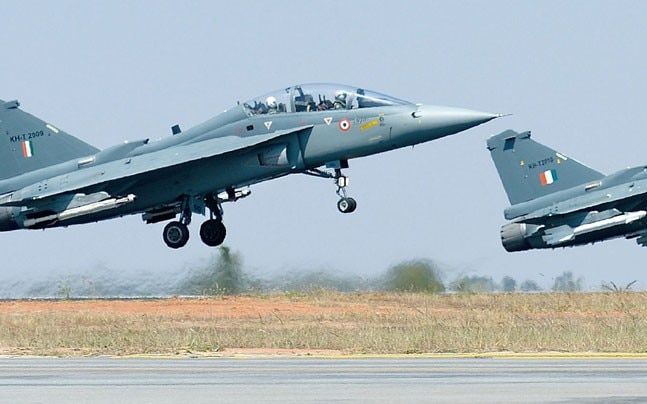Documents accessed by India Today reveal that the IAF has told the government that the "endurance" of Tejas in combat is just about 59 minutes as against 3 hours of Gripen and nearly 4 fours for the F-16. Also, Tejas can carry a pay-load of about three tons against nearly six tons and seven tons by the Gripen and F-16 respectively.
The IAF made a presentation to the government to explain why Tejas alone can't meet India's requirements.

www.indiatoday.in
What is this porkies keep spamming?
Fallacy 1. For one, its combat “endurance” — the time an aircraft can last without replenishing its resources — is not even an hour compared to 3 hours for the JAS 39 Gripen manufactured by the Swedish aerospace company Saab and almost 4 hours for the US-made F-16, the two aircraft shortlisted by the IAF to boost its depleted squadron strength.
Truth: The endurance of an aircraft is determined by four primary factors, the fuel fraction, the lift-to drag ratio, the specific fuel consumption of the engine and the mission profile. The fuel fraction is simply the fraction of the aircraft’s weight covered by fuel. It is a key measure of endurance because it nullifies the effect of the particular size of the various aircraft being compared. The higher the fuel fraction, the better the endurance. The fuel-fractions of the Gripen C/D, the F-16 and the Tejas under various internal and external fuel tank conditions are covered in Table 1 below. As we can see, they are quite close to each other in terms of magnitude. Next comes the specific fuel consumption (SFC) of the engine. The Tejas and the Gripen C/D use the same engine, while the engine of the F-16 has near identical SFC. Next comes the lift-to-drag-ratio. It is a measure of aerodynamic efficiency that specifies the penalty the aircraft pays in order to fly through the air. These numbers are classified. However, for all modern aircraft, these numbers, especially those related to long endurance i.e. cruising are very similar. In fact, they are within 5 percent of each other.
| Weight | Fuel fraction | | | | | |
| clean take off weight | internal fuel | max external fuel | typical external fuel | internal only | maximum external fuel | typical external fuel |
| Gripen C/D | 10 | 2.3 | 2.64 | 1.76 | 0.23 | 0.39 | 0.35 |
| F-16 (without CFTs) | 13.28 | 3.175 | 4.543 | 3.63 | 0.24 | 0.43 | 0.40 |
| LCA | 9.8 | 2.485 | 2.56 | 1.92 | 0.24 | 0.40 | 0.37 |
*Weights in tons. #CFT= Conformal Fuel Tank
Table 1: Fuel Fraction Comparison involving the LCA Tejas, the F-16 & the Gripen C/D
If all these critical aerodynamic parameters are near identical then how can the Tejas have only 1/3rd or 1/4th the endurance of a Gripen or a F-16 respectively, as is being claimed?
Of course, it doesn’t! The Tejas regularly flies non-stop between Bengaluru and Jodhpur & Bengaluru and Jaisalmer for various trials and exercises. For example, flying between Bengaluru and Jaisalmer with two 1200 litre (l) drop tanks, the aircraft lands with 800 kg of fuel still onboard even after flying for 2.5 hours! In fact, these flights are regularly done at 28,000 feet (because of air traffic regulations) instead of 35,000 feet where the endurance will be even greater. Taking all these aspects into account it is easy to see why the endurance of the Tejas Mk1 and Mk1A is above 3 hours, pretty much like that of the Gripen C/D and the F-16, with whom it is being compared. With CFTs, the F-16IN can fly longer for about 4 hours.


www.indiatoday.in

www.indiatoday.in

www.indiatoday.in

 defenceupdate.in
defenceupdate.in

www.indiatoday.in
